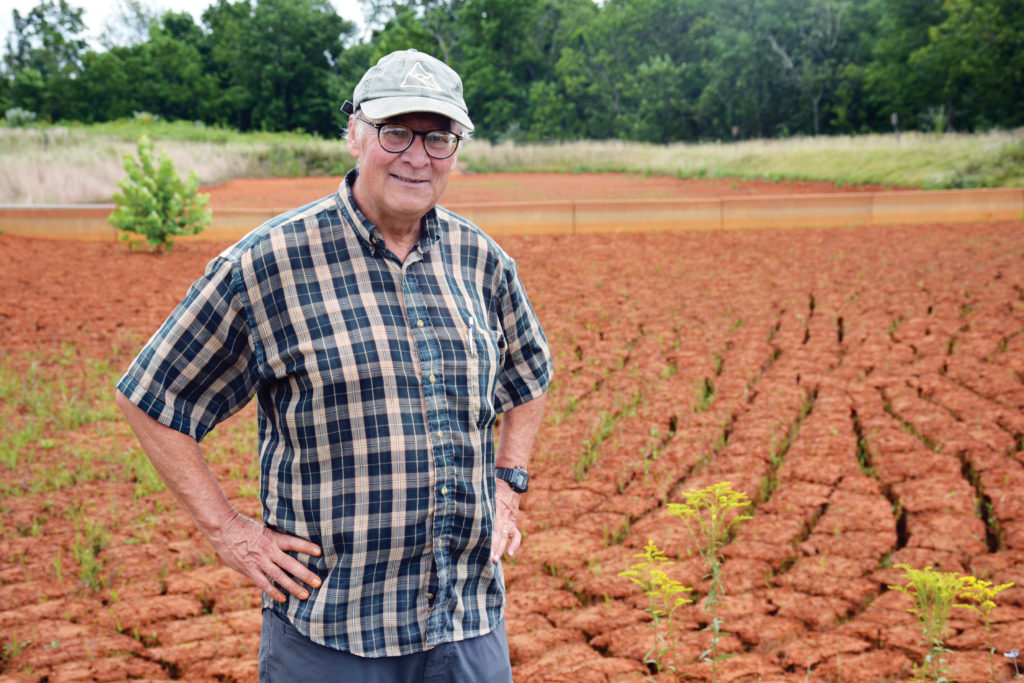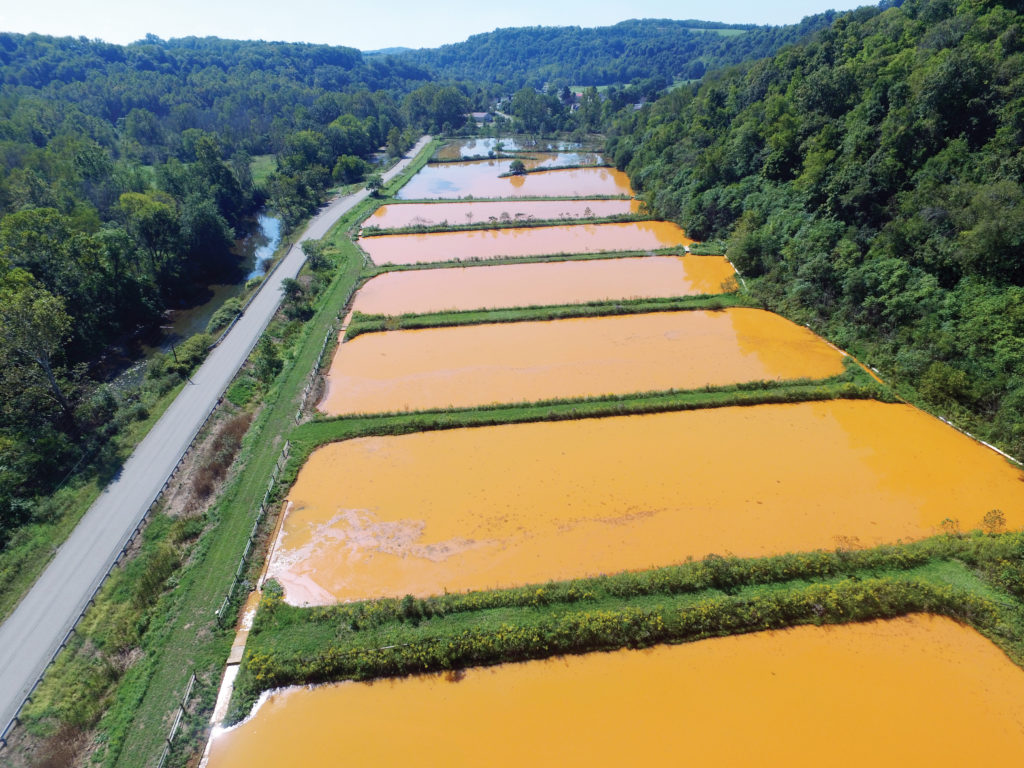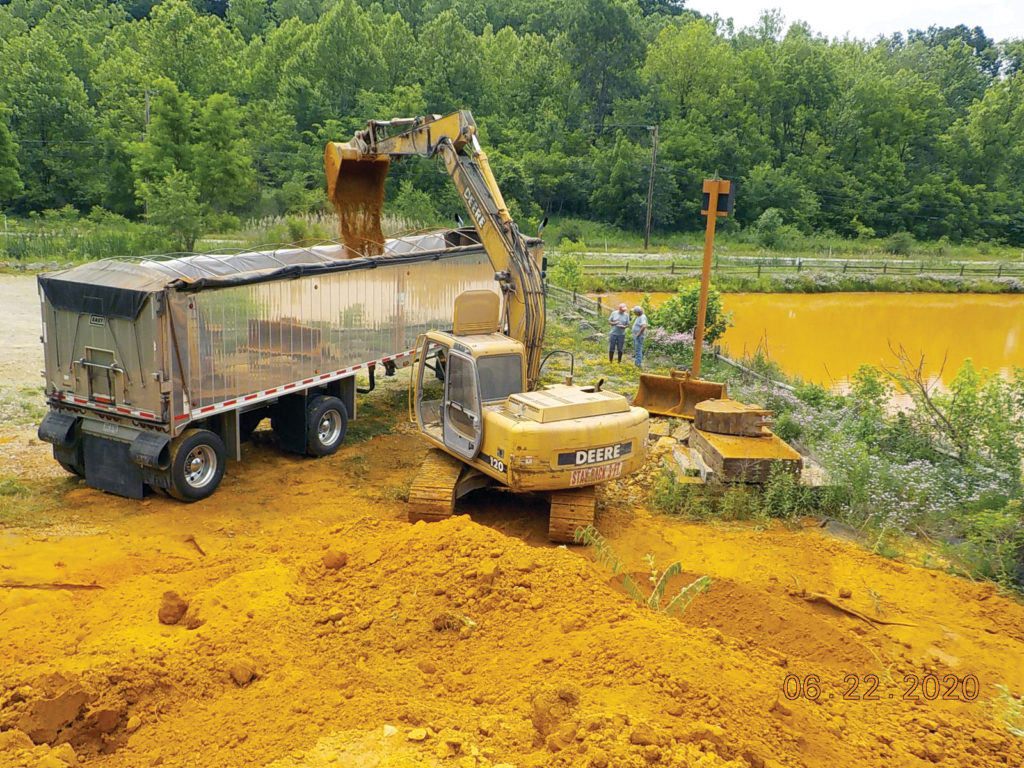
Hedin Environmental, based in Mount Lebanon, was formed in 1994 by Dr. Robert (Bob) Hedin. The company is a leader in developing passive treatment systems to treat mine drainage. Bob and his team have used their expertise to implement multiple projects to address abandoned mine drainage (AMD) throughout Westmoreland County. They have worked with several Westmoreland Conservation District partners over the years including the Kiskiminetas Watershed Association, Turtle Creek Watershed Association, Loyalhanna Watershed Association, Sewickley Creek Watershed Association (SCWA) and Saint Vincent College.
Bob’s relationship with the District began in the early 2000s when he was approached by SCWA about AMD at a site in Lowber. Here, an abandoned coal mine was discharging iron-contaminated water into Sewickley Creek. SCWA had received a grant to complete a project and the District was to assist in managing the site. Hedin Environmental designed a system of settling ponds and wetlands to capture iron sludge (a product of of AMD). In systems like this, over time, the ponds slowly fill with iron sludge, and eventually require removal of the sludge to ensure continued treatment. The ponds hold a large amount of sludge – between 250,000 to 500,000 gallons – which is then pumped into either holding ponds or geotubes, depending on available space at the site. The sludge is stored onsite for about a year in order for the water to drain away. What remains is iron oxide, which can then be reused or disposed of. When reused, the iron oxide can be utilized in several applications, one of which is to use it as a pigment. Bob has successfully patented this process and has been able to sell the iron oxide from sites he has worked on. The pigment, a sienna color, can be used to make products like paint, or used to color items such as t-shirts. Interestingly, the pigment was used to color the main floor of the District barn. Hedin Environmental’s iron oxide recovery process is an example of conservation at its finest – a water contaminant is recovered and then reused as a valuable product. So far in Westmoreland County, all iron oxide Bob has recovered has been able to be reused; none has required hauling off to a landfill or being buried.


left photo: At the Lowber passive abandoned mine drainage treatment system, mine water travels through a series of ponds so iron oxide can settle and filter out before the water enters the Sewickley Creek (top left). This site offers various public education opportunities including interpretive signs, special programs and a scenic walking trail. right photo: Iron oxide is regularly harvested from the bottoms of the ponds, then dried and sold for commercial use.
Hedin Environmental has worked on many passive AMD treatment sites in Westmoreland County. These sites treat AMD naturally without the use of chemicals. Passive site features also provide wildlife habitats. Hedin Environmental is currently working with Turtle Creek Watershed Association and Loyalhanna Watershed Association on treatment options for remedying AMD at discharges in Irwin and Crabtree – two of the largest discharge sites in the region.
Bob and his team have also completed passive AMD treatment projects throughout Appalachia, in the western U.S., and around the world. According to Bob, “The real reward is when you go to the end of a treatment system and see crystal clear water coming out, and a wetland with vegetation and wildlife in it, and you see the benefits that we are producing with these systems”.
Earlier this year, Bob transferred the company to his son, Ben Hedin, and long-time employee, Neil Wolfe. Bob plans to remain very involved in the company and they have some big mine drainage projects coming up in Westmoreland County

